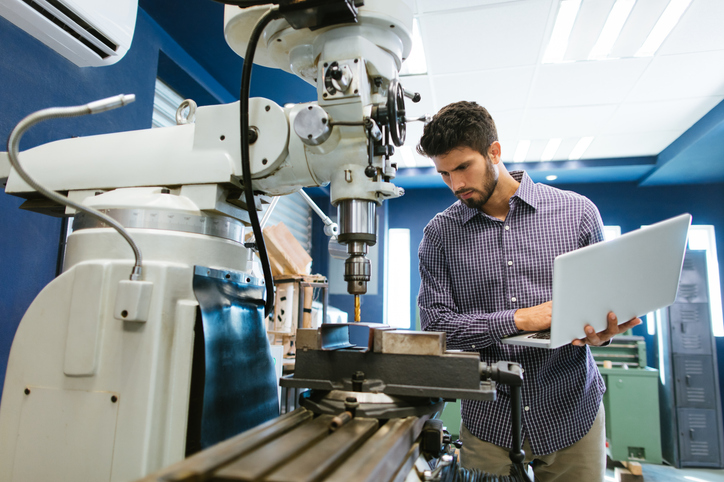With the impact of identity fraud firmly in the news agenda, ShowUp’s Jeremy Newman believes that the current prevention checks and balances are essentially broken and ineffective. He speaks to GrowthBusiness on how his business started up and what companies can do to prevent financial fraud.

What does your business do?
We’re aiming to make people’s lives easier and safer by using natural visual verification instead of passwords to defeat identity fraud. We work on the simple principle that organisations don’t know people – people know people. We believe that people can fix our broken identity system, and our software helps them do that.
By taking a special kind of selfie, ShowUp verifies identity claims in real time using people. This benefits users because they don’t need to provide passwords, answers to security questions or anything else that can be hacked – they just ShowUp. The social collaboration and crowdsourcing activities we have built around a ShowUp selfie tells organisations when they are dealing with an impostor instead of their customer.
Where did the idea for your business come from?
It’s the culmination of 25 years of collaboration with my co-founder, Chris Smithies, in which we have focused on the intersection of computers, people, and digital evidence of their presence and their intent. In short – electronic signatures and digital identity.
My first software venture was a company called Peripheral Vision, which I formed after leaving Acorn Computers in 1990. I saw computerised recognition of handwriting as the next logical step on from Optical Character Recognition (OCR) that I had worked on at Formscan. I teamed up with Chris and we soon found ourselves becoming part of the “pen computing revolution” in Silicon Valley in the early 1990s, working with companies such as GO and EO. We developed a biometric signature verification package called PenOp, and grew the business through several rounds of venture capital. I went out to New York to set up US operations in 1994, and spent five incredibly intense years at it, most of it spent on planes trains and automobiles.
I learnt through my experience at PenOp organisations that ask people for passwords for verification purposes are unable to tell the difference between a customer and an impostor. The thing is, this is true of any data, whether password or biometric. Businesses are asking consumers for more complex passwords, ‘memorable’ information and personal data than ever. However, this exposes people to risk as it drives fraudsters to obtain and trade in such data. But how do you prove someone’s identity without it?
This was when we realised we needed to strip it all back and go to the source of identity, and this meant creating a system that harnesses the natural ability of people to recognise one another. And this is what we have built.
How did you know there was a market for it?
I knew there was a market for a new model for identity through my experience within the field as well as through continuous research. There are hundreds of stories within the media which express how corporations and users everyday are affected by identity fraud and the problems associated with passwords and providing businesses with even more personal data. Identity fraud can affect anyone using a password. Fraud is already costing the UK £193 billion a year, with this figure set to increase.
What has changed is the technology landscape. For the first time, everyone has a camera connected to the internet, and this made our solution possible. As a team, we have used our knowledge within the sector to create a scalable and permanent solution to the problem.
How did you raise funding, and why?
I participated in a series of events held in various cities around the UK by AngelNews called ‘Pitching for Management’. At one of these events in Bristol I met Richard Rundle, who became ShowUp’s CEO. The issues we were solving resonated with him due to similar issues he experienced at BAA plc as their CIO, where the identity of passengers moving through an airport terminal was of utmost significance. He liked the way we had solved the problem by turning it on its head, and that our solution was secure yet simple for users. He reached out through his network of contacts for potential investors who could also help us develop the business. To be honest, the people were more important than the funds.
Describe your business model in brief.
Essentially, organisations pay usage-related fees to have fraudsters excluded from the channel to their customer. The customer gets to join the network for free. Members protect their nearest and dearest from impostors, who in turn do the same for them. Everyone benefits – except fraudsters.
Although people form the engine of our solution, it is aimed at helping businesses protect (and so retain) their customers. Banks, businesses and government departments are using an approach to identity fraud detection which they know to be flawed. If they don’t adapt to today’s threat landscape, they will lose customer trust and the reputation of their business will suffer.
What was your first big milestone and when did you cross it?
Looking back, leaving my job at Acorn and setting up Peripheral Vision (later PenOp) was a major milestone. It meant going from a monthly salary to being responsible for winning business to pay not only yourself, but many other people too. Eventually we took on venture capital funding and I relocated to the US, and PenOp ended up serving 300 customers in over 25 countries. By the time the business was acquired, Chris and I had co-authored ten US patents, and so we learnt first-hand the value of intellectual property to a business.
What advice would you give to other entrepreneurs?
Find others to help you. Hiring a CEO, COO, and CTO will help to spread the work load and frees you to execute your vision. Everybody has their own skills and attributes that help develop and grow your business.
Where do you want to be in five years’ time?
In five years time I’d like to see that ShowUp has become established as a leading identity fraud solution for businesses, and that we have succeeded in putting people at the top of the identity value chain. With continued product development, ShowUp will be utilised by banks, retailers, social media sites to eradicate the need for passwords and eliminate identity fraud.
If you weren’t an entrepreneur, you would be…
I was lucky that our school purchased its first computer just before I left, and even more fortunate that they let me learn how to program the thing. Until then, I was keen on photography and electronics as hobbies, and doing stage lighting for productions at school. So I guess I would be working in theatre or film, behind the camera.
What is your philosophy on business or life, in a nutshell?
Follow your bliss. That doesn’t mean being hedonistic, it means working out what you enjoy being good at, and following that path come what may.






